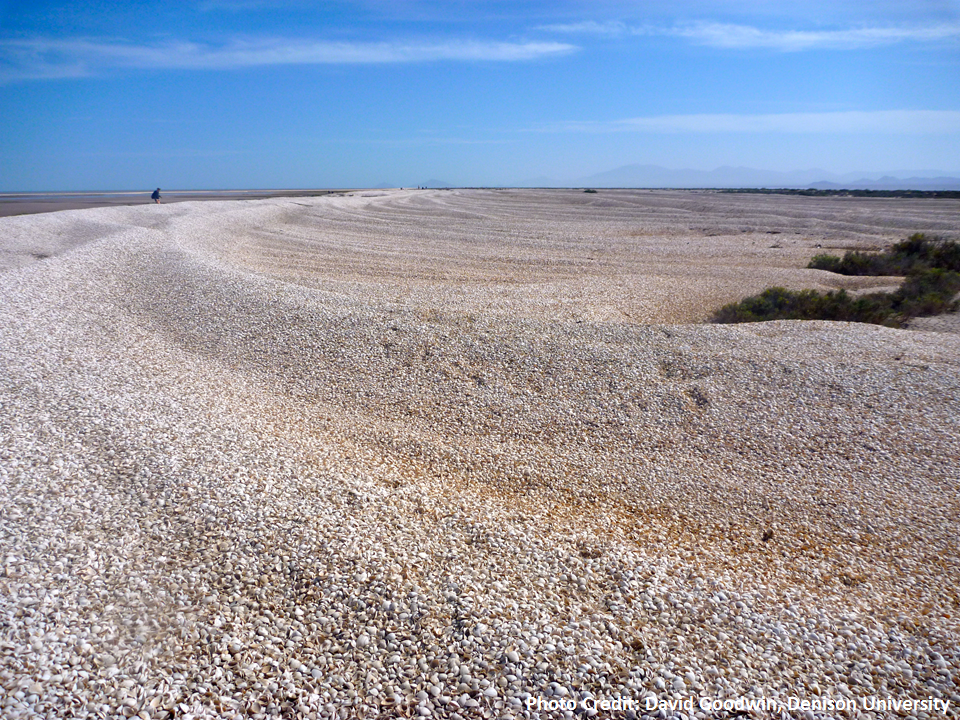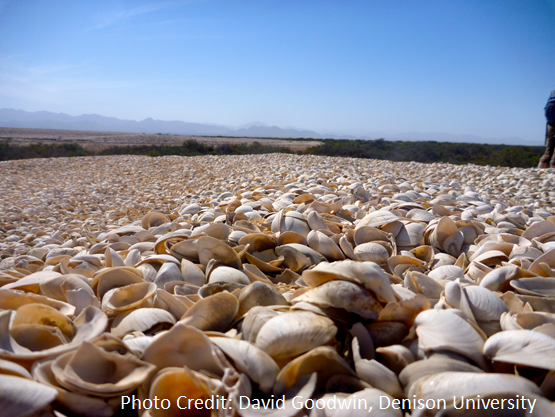
What child hasn’t dropped a leaf in a gutter and watched as it floated away, or watched bathwater spiral down the drain and into oblivion? Even as adults, we assign an almost spiritual value to the act of simply watching a river flow past us. But sadly today, most of us give little thought to how the flows of water around us impact and shape our world. Roxanne Banker tried to get us thinking about flows in a presentation on sediment transport in the Grand Canyon this week.
The Colorado River Basin, where the Grand Canyon is found, encompasses over 246,000 square miles and provides over 30 million people with water. Historically, this watershed saw a natural cycle of flooding during spring and summer when snow melt was occurring, and in the late summer and early fall when there are frequent storms. Some of these flood waters contained about 15% sediment by weight, the fine grained organic and inorganic materials that feed the habitat (i.e. by deposition on beaches) as well as the animals that live in the habitats. Without sediment inputs sand beaches wash away and rivers become clear and devoid of the organic materials and nutrients that feed the plants and animals that form the base of the food chain.
How can we tell how important sediment input is to maintaining healthy ecosystems? Dam building above the Grand Canyon during the second half of the 20th century provide us with the opportunity to observe these effects first hand. Humans have been constructing dams to store water and regulate flows since at least 3000 BC. Modern dams serve multiple purposes: water storage and flow regulation, generation of electricity, and the capture of sediments that shorten the lifespan of reservoirs downstream. The Colorado River Basin contains over 40 major dams, the Flaming Gorge and Glen Canyon dams being two of the more significant.
The Flaming Gorge dam was completed on the Green River in 1964, has a storage capacity of about 3 million acre feet of water and can generate about 350,000 megawatts annually. Completion of the dam lead to the formation of the Flaming Gorge Reservoir and a reduction in sediment discharge by about half throughout the lower reaches of the watershed. The Glen Canyon dam was completed in 1966, and has a storage capacity of about 26 million acre feet of water that can generate about 3,800,000 megawatts annually. Completion of the dam lead to the formation of Lake Powell which retains virtually all of the suspended sediment from the upper Colorado River Basin. This means that today essentially no sediment from the upper half of the basin makes it to the lower half, and as Banker noted “the Colorado River no longer regularly flows to the Gulf of California.” But is it really that big of a deal?
The damming of the Colorado River and its tributaries has revealed its own ecological effects in a very interesting way. As sediment in the lower basin washes away and no new sediment comes in to take its place, erosion of fine-grained particles from the river delta has revealed large deposits of clam shells called cheniers. Cheniers are beach ridges that are formed in muddy environments when tidal action removes fine grained sediment leaving a long, tall ridge of shells that are then pushed landward by wave action. What can a big pile of shells tell us about modern changes to the ecosystem, you ask?


The cheniers at the mouth of the Colorado River that are exhumed because of sediment trapping behind the dams date from about 1000 years ago to about a decade before the Flaming Gorge and Glen Canyon Dams were completed. They contain about 20 trillion clam shells, and as Banker notes “That’s a lot of animals!” By examining these deposits of shells researchers have estimated there were historically about 50 individuals per square meter. Today, following the man-made altering of flows and loss of sediment deposition downstream, clams occur at only about 3 individuals per square meter, that’s about a 94% reduction! Not only are there many fewer clams, but the species composition has shifted. The most common pre-dam species of the Mulinia genus are now a minority with Chione clams now dominating. The phenomenon demonstrates that trapping sediment behind dams has had significant effects on both the physical and biotic state of the Colorado River Basin.
So the next time you find yourself sitting by a river take a moment to appreciate all of the processes that depend on those flows. Consider how the waterway might look if there weren’t dams upstream. Daydream about what interesting creatures might be sharing that bit of beach with you if they didn’t have to share their resources with humans. And remember, all of our actions flow downstream eventually.
